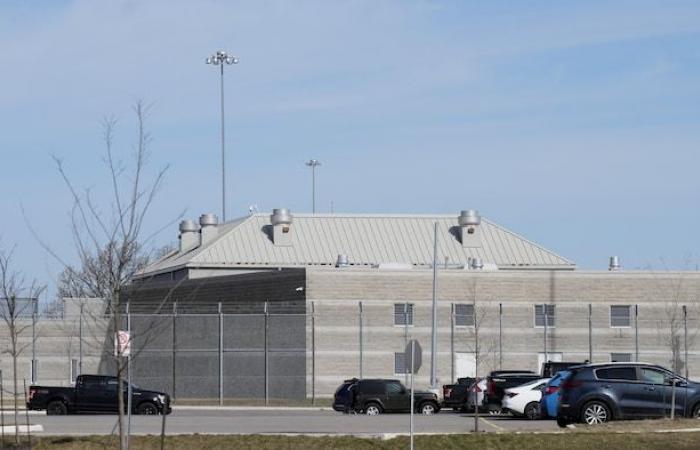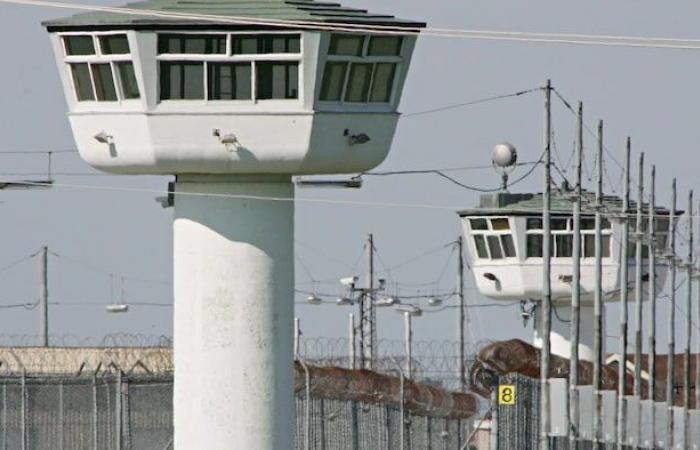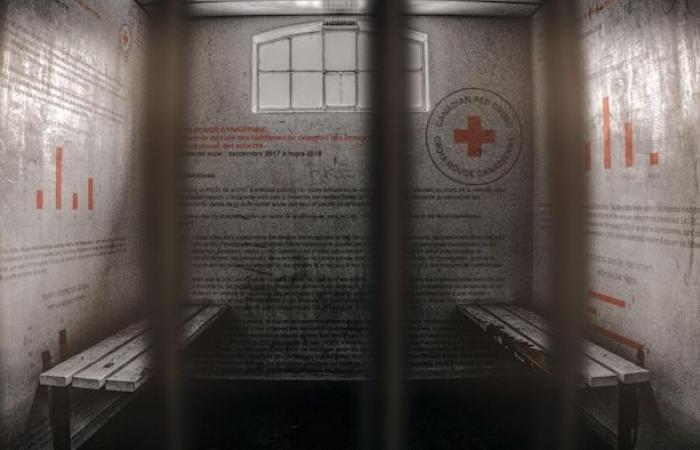The victory was short-lived.
For years, human rights groups and immigration lawyers have campaigned for Canada to stop imprisoning foreign nationals for immigration purposes, a practice that violates international law.
They believed they had finally won their case.
Since 2022, the 10 provinces have announced one after the other that they will no longer incarcerate migrants in their prisons on behalf of the federal government.
They had given one year’s notice to the Canada Border Services Agency (CBSA), as required by some of the contracts.
But Ontario keeps pushing back its deadline. It is the province with the largest number of immigration detainees in Canada each year.
After initially announcing that it would stop incarcerating migrants as of June 15, 2024, the Ford government agreed to extend its contract with the federal government until July 31, 2024.
He has now decided to maintain this controversial practice for another year, according to information obtained by Radio-Canada.
Following a request from the federal government, Ontario granted an extension until September 2025 to give the federal government more time to upgrade necessary infrastructure for immigration detention
confirmed Brent Ross, a spokesperson for the Ministry of the Solicitor General.
Open in full screen mode
Maplehurst Provincial Prison in Milton, Ontario, where people are often detained for immigration reasons.
Photo: The Canadian Press / Nathan Denette
It’s really disappointing
reacted lawyer Stéphanie Valois, co-president of the Quebec Association of Lawyers in Immigration Law.
Detention in prisons was said to be contrary to international standards, and to have serious consequences for the mental health of migrants. And that was recognized, because we saw the provinces cease their agreements one after the other
she said.
To see that Ontario is extending its agreement with the federal government for several months, we consider that to be really problematic.
she said.

Open in full screen mode
The co-president of the Quebec Association of Immigration Lawyers, Stéphanie Valois
Photo : Facebook / L’audience, AQAADI
For its part, Quebec has decided not to renew its contract with the federal government, despite discussions to this effect between Prime Ministers Legault and Trudeau last June.
All the other provinces, except one, also confirmed to Radio-Canada that they had ended their agreements.
Newfoundland and Labrador, which was the last to signal its intention to no longer incarcerate immigration detainees, intends to cease the practice completely as of March 31, 2025.
From prisons to penitentiaries
Faced with the decisions of the provinces, the Trudeau government chose to use federal penitentiaries for immigration detainees whom it describes ashigh risk
.
This proposal, buried at the bottom of the federal budget last April, provoked the anger of former Liberal federal ministers in particular. Lloyd Axworthy et Allan Rockrespectively president and member of the Global Council on Refugees and Migration.
Despite strong opposition to the project, the federal government is moving forward.
L’ASFC announced that the Regional Reception Center, located in Sainte-Anne-des-Plaines, about fifty kilometers north of Montreal, will receive immigration detainees starting next year.
Some of the worst criminals in the country have ended up in this penitentiary, like the serial killer Clifford Olson and the head of the Quebec section of Hells Angels Maurice Mom
Boucher.
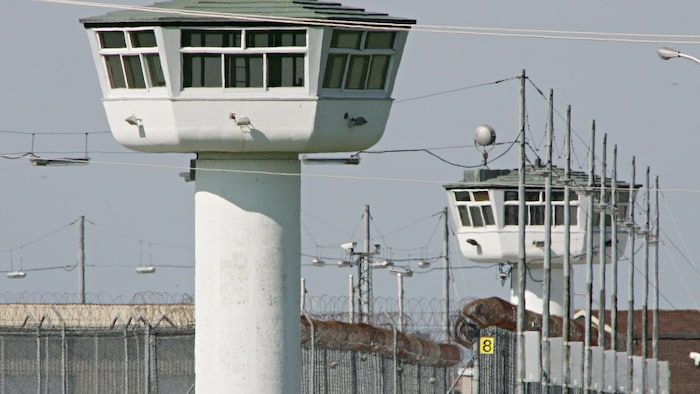
Open in full screen mode
Surveillance towers at the federal penitentiary in Sainte-Anne-des-Plaines, Quebec
Photo: The Canadian Press / Jonathan Hayward
The envisioned space is separate from all federal inmates and will have approximately 25 beds
the federal agency said in a press release issued earlier this month.
This location will only be used to detain adult males who pose a significant risk to public safety
added theASFC.
According to lawyer Stéphanie Valois, we are in the process of recreating in federal penitentiaries the same conditions long denounced in provincial prisons.
Immigration detention is a matter of administrative law. However, immigration detainees who find themselves behind bars are subject to the same treatment as people detained under the Criminal Code, says the lawyer.
They are handcuffed, they are subjected to strict routines, they have great difficulty having contact with the outside world, including with their lawyers.
she said.
Under the Immigration and Refugee Protection Act, theASFC may detain foreign nationals or permanent residents for three main reasons:
- poorly established identity;
- danger to public safety;
- flight risk, which is if the agency fears that the person will not appear for immigration proceedings, such as removal.
Since 2012, theASFC detained an average of 6,410 migrants per year, the vast majority of whom were at risk of flight.
The Agency could choose to send them to one of its three immigration holding centers or to provincial prisons across the country, when its agreements with the provinces were still in force.
On average, 1,784 migrants ended up in prison each year.
Now, the federal agency says there are only 21 immigration detainees in provincial jails as of September 13, 2024.
For Me Valois, it is clear that over all these years many migrants have been incarcerated who should never have been.
She is delighted that theASFC places greater emphasis on alternatives such as community supervision and the use of guarantors.
But she fears a step backwards when the federal agency will have access to federal penitentiaries, recalling that the place of detention of migrants is the sole prerogative
of theASFC.
Monitoring reports not available
As the immigration detention system undergoes major changes, one of the few outside perspectives is no longer available to the public.
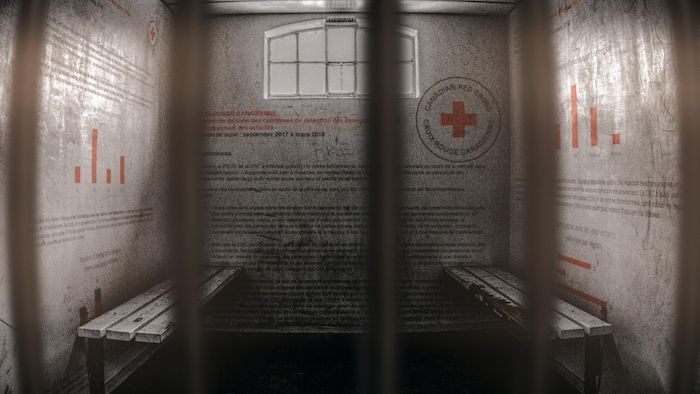
Open in full screen mode
The CBSA has not made public the last three Canadian Red Cross reports on migrant detention conditions.
Photo : Radio-Canada / Yosri Mimouna
The Canadian Red Cross is the only organization that visits immigration monitoring centers and provincial prisons on a regular basis to report on the conditions of migrant detention.
In 2017, when the contract between the Red Cross and theASFC was enhanced to allow a greater number of monitoring visits, the federal agency has committed to publishing the organization’s annual reports.
Or l’ASFC hasn’t done it for three years.
In the past, Red Cross reports have raised a series of violations of international law.
Among them, we note the cohabitation of people detained for immigration reasons with those detained under the Criminal Code, and the punitive measures that result from this such as strip searches and solitary confinement.
The Red Cross has confirmed that it has handed overASFC its annual reports for 2021-2022, 2022-2023 and 2023-2024.
If the agency has nothing to hide, why shouldn’t we have access to these reports?
asks Ms. Stéphanie Valois.
In response to our questions, theASFC says it plans to release two of three annual reports this fall.
An adaptation in Arabic (New window) of this text is available on the website of RCI (New window).


